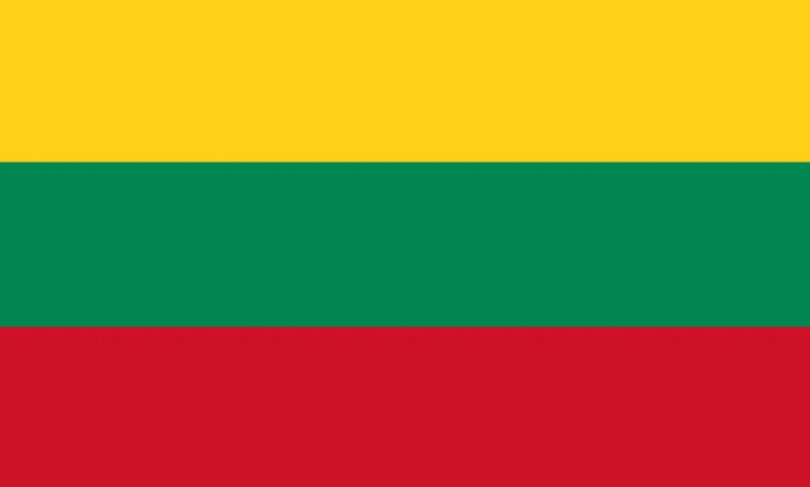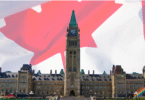Have you been dreaming of exploring Europe and Lithuania in particular? That’s a great choice! Lithuania is a beautiful country full of history, nature, and charming cities. But before packing your bags, you’ll need a Schengen visa if you’re not from a visa-free country.
Now, if the whole visa process feels confusing or even a little scary, don’t worry. You’re not alone and you’re definitely in the right place.
This blog is your guide to applying for a Lithuanian Schengen Visa. Whether you want to visit Lithuania for tourism, to meet family or friends, or even attend a business meeting, this article is made just for you.
What is a Lithuanian Schengen Visa?
A Lithuanian Schengen Visa is a type of short-stay visa that lets you travel to Lithuania and other countries in the Schengen Area for up to 90 days within a 180-day period.
In simple words, if you get this visa, you can:
- Visit Lithuania for tourism, business, or to see loved ones.
- Travel to any of the 27 Schengen countries (like Germany, France, Italy, etc.) without needing another visa.
- Stay for a maximum of 90 days in any 6-month period.
You’re getting one visa, but it works for almost all of Europe.
What is the Schengen Area?
The Schengen Area is a group of European countries that agreed to remove border checks between them. This means that once you enter one Schengen country, you can move freely to others without showing your passport again at the borders.
Countries in the Schengen Zone include:
- Lithuania
- Germany
- France
- Spain
- Italy
- Netherlands
- Sweden
…and 21 others!
So, if you plan to start your trip in Lithuania, but also want to visit nearby countries like Latvia, Estonia, or Poland, this visa lets you do that with ease.
Who Needs a Lithuanian Schengen Visa?
Not everyone needs a visa to enter Lithuania or the Schengen Area. Whether you need a visa or not depends on your nationality and the purpose of your visit.
People Who Need a Lithuanian Schengen Visa
You will need to apply for a Lithuanian Schengen visa if you are from a country that does not have a visa-free agreement with the Schengen Area.
These include many countries in:
- Africa (like Nigeria, Ghana, Kenya)
- Asia (like India, Pakistan, Philippines)
- The Middle East (like Iraq, Iran, Lebanon)
- South America (some countries like Bolivia or Cuba)
- And some Caribbean and island nations
If your country is not on the visa-free list, you must apply for a Lithuanian Schengen Visa before you travel.
People Who Do Not Need a Lithuanian Schengen Visa
You do not need a visa to enter Lithuania for short stays (up to 90 days) if you are from a visa-exempt country. These include:
- All European Union (EU) and Schengen Area countries
- The United States
- United Kingdom
- Canada
- Australia
- New Zealand
- Japan
- South Korea
- And a few others
People from these countries can travel freely to Lithuania for tourism or business without applying for a visa as long as they don’t stay longer than 90 days in any 180-day period.
How to Know If You Need a Visa?
The easiest way is to check the official website of the Lithuanian Ministry of Foreign Affairs or the nearest Lithuanian embassy or consulate in your country.
Or simply ask yourself:
“Am I from a country with visa-free access to the Schengen Zone?”
If the answer is no, then yes—you’ll need a Lithuanian Schengen visa.
Types of Lithuanian Schengen Visas
Before you start your application, it’s important to know what type of Lithuanian Schengen visa you need. Lithuania, like other Schengen countries, offers several types of short-stay visas depending on why you’re visiting.
1. Tourist Visa
This is the most popular one. If you’re planning to:
- Sightsee in Vilnius, Kaunas, or Trakai
- Explore Lithuanian culture
- Take a vacation
Then the tourist visa is what you need.
Valid for: up to 90 days
Allows travel to other Schengen countries too
-
Visitor Visa
Use this if you’re visiting:
- A friend or family member who lives in Lithuania
In most cases, you’ll need an invitation letter from the person you’re visiting. The letter should include:
- Their personal info
- Your relationship with them
- Dates of your visit
- Proof they can host or support you
-
Business Visa
This is for people who are traveling for:
- A business meeting
- A conference or trade show
- Signing contracts or partnerships
You’ll need a letter from the company in Lithuania or your own company explaining the purpose of the trip.
-
Short-term Study or Cultural Visa
Going to:
- Attend a workshop?
- Join a short training program?
- Take part in a cultural exchange?
Then this visa is the right choice. You’ll need proof of the program and your registration.
-
Airport Transit Visa (Visa Type A)
If you are just passing through the international zone of a Lithuanian airport and not entering the country, you might need an airport transit visa.
But only citizens from certain countries need this. For most people, a transit visa is not required.
Important Note:
All the visas mentioned above are Type C visas, meaning they are for short stays (90 days max within a 180-day period).
If you want to study, work, or live long-term in Lithuania, you’ll need a National Visa (Type D) or a residence permit, which is a totally different process.
Requirements for a Lithuanian Schengen Visa
To apply for a Lithuanian Schengen visa, you need to gather important documents that prove who you are, why you’re traveling, and that you’re prepared to return home afterward.
Let’s take it step by step and explain each document clearly.
- Visa Application Form
You must fill out the Schengen visa application form completely and honestly.
You can usually:
- Fill it online (depending on your local embassy or consulate)
- Or print it and fill it by hand
Make sure:
- There are no blank spaces
- You sign and date the form
- Valid Passport
Your passport must:
- Be valid for at least 3 months after your planned departure from Lithuania
- Have at least 2 blank pages
- Be issued within the last 10 years
- Passport Photos
You need two recent passport-sized photos that meet these requirements:
- White background
- Neutral face (no smile)
- Taken within the last 6 months
- Travel Itinerary
This is a simple document that shows:
- Your flight bookings (to and from Lithuania or the Schengen Area)
- A rough plan of what you’ll do during your visit
Note: You don’t need to buy flight tickets before getting the visa. Just a flight reservation is fine.
- Proof of Accommodation
Show where you’ll stay during your trip:
- Hotel bookings
- Airbnb confirmation
- Invitation letter from a friend/family with their address
- Proof of Funds
You must prove you have enough money to support yourself during the trip.
You can show:
- Bank statements from the last 3–6 months
- Payslips
- Proof of sponsorship (if someone is covering your costs)
Lithuania generally expects visitors to have at least €40 per day.
- Travel Insurance
Your travel insurance must:
- Cover at least €30,000 in medical expenses
- Be valid in all Schengen countries
- Be active for the whole duration of your trip
- Cover Letter
This is a short personal letter where you explain:
- Why you want to visit Lithuania
- How long you’ll stay
- Where you’ll go
- How you’ll pay for the trip
- That you plan to return to your home country
This helps the visa officer understand your purpose clearly.
- Invitation Letter (if applicable)
If you’re visiting a friend, family, or going for business, you’ll need an invitation letter from the person or company in Lithuania.
It should include:
- Their name, address, contact info
- Your relationship with them
- Dates and purpose of the visit
- Proof of Ties to Your Country
To show you plan to return after your trip, submit:
- Employment letter
- Proof of school or university
- Property documents
- Family ties (marriage certificate, children’s birth certificate)
This is especially important if you’re from a high-risk country for overstaying.
Step-by-Step Guide to Apply for a Lithuanian Schengen Visa
This is where we walk through the exact steps you need to follow, from the moment you decide to apply, all the way to getting your visa in your passport.
Step 1: Know Your Visa Type
Before anything else, ask yourself:
- Why am I going to Lithuania?
- Is it for tourism, business, family visit, or something else?
Your answer will help you know the exact type of visa to apply for.
Step 2: Find the Right Embassy or Visa Center
Depending on where you live, you may apply:
- Directly at the Lithuanian Embassy or Consulate in your country
- Or at an official visa application center like VFS Global that handles Lithuanian visas
Some countries don’t have a Lithuanian embassy, so you may apply through another Schengen country’s embassy (like Poland or Germany) that represents Lithuania.
Check the embassy’s website to confirm who handles Lithuanian visas in your country.
Step 3: Book an Appointment
You cannot just walk in, you need to book a visa appointment.
- Do this online (on the embassy’s or visa center’s website)
- Choose a date and time that works for you
- Print or save the confirmation
Tip: During busy seasons (like summer or holidays), appointments fill up fast. Book early.
Step 4: Fill the Visa Application Form
You’ll need to:
- Fill out the Schengen visa application form (either online or by hand)
- Make sure all answers are correct and match your documents
- Sign and date it at the end
Always double-check your spelling and travel dates.
Step 5: Prepare All Required Documents
Gather every single document we mentioned in Section 5:
- Passport
- Photos
- Proof of accommodation
- Travel insurance
- Proof of funds, etc.
Keep everything in one folder and make photocopies of the important ones.
Step 6: Go for the Visa Interview
On the day of your appointment:
- Dress neatly
- Arrive at least 15–30 minutes early
- Bring all original documents and photocopies
- Be calm and honest in your interview
They might ask simple questions like:
- Why are you going to Lithuania?
- Who will pay for the trip?
- What do you do for work?
Just speak naturally and answer clearly.
Step 7: Pay the Visa Fee
As of now (subject to change):
- The visa fee for adults is €80
- Children between 6–12 years: €40
- Children under 6: Free
Payment is usually done at the visa center by cash or card depending on the country.
This fee is non-refundable even if your visa is denied.
Step 8: Wait for Processing
After your interview, your application will be sent for review.
Visa processing time:
- Normally takes 15 calendar days
- In some cases, it may take up to 45 days, especially if more documents are needed
You can track your visa status online with a tracking number from the visa center.
Step 9: Collect Your Passport
Once your visa is ready:
- You’ll get an email or SMS notification
- You can go to the visa center or embassy to collect your passport
- Or request home delivery (if available)
Open your passport and check:
Visa sticker dates
Number of entries
Personal information is correct
Where to Apply for a Lithuanian Schengen Visa
So, you’ve got your documents ready and you know the visa type. Now the big question is: Where exactly do you apply?
The answer depends on where you currently live, because Lithuania doesn’t have embassies in every country.
If There’s a Lithuanian Embassy or Consulate in Your Country
If Lithuania has a local embassy or consulate in your country, you can apply directly there.
What to do:
- Visit the official website of the Lithuanian Embassy
- Book an appointment online
- Follow the instructions carefully
If There’s No Lithuanian Embassy in Your Country
Don’t panic! In many countries, Lithuania partners with visa centers like VFS Global, or another Schengen country’s embassy (like Poland, France, or Germany) to process applications on its behalf.
Here’s what to do:
- Go to the Lithuanian Ministry of Foreign Affairs website
- Check which country or visa center handles applications for your region
- Follow the links to book your appointment and check their checklist
Important Tip:
Before you submit anything:
- Make sure to check whether Lithuania is your main Schengen destination
- You should only apply for a Lithuanian visa if you are spending the longest part of your trip in Lithuania, or entering the Schengen Zone through Lithuania
Otherwise, your visa can be rejected.
How to Check Where to Apply
- Go to Lithuania’s Ministry of Foreign Affairs website
https://keliauk.urm.lt/en - Select your country of residence
- It will show you:
- Which embassy/consulate or visa center you should use
- Links to book an appointment
- Contact details
Frequently Asked Questions (FAQs)
-
Can I visit other countries with a Lithuanian Schengen Visa?
Yes! Once you get a Schengen visa from Lithuania, you can travel freely to all 26 Schengen countries, as long as Lithuania is your main destination.
-
How early should I apply?
Apply at least 15 days before your trip, but not earlier than 6 months in advance (or 9 months for seafarers).
-
How long can I stay in Lithuania with a Schengen Visa?
You can stay for up to 90 days within any 180-day period. It’s for short stays only — tourism, visiting, or business.
-
Can my visa application be denied?
Yes, it can be denied if:
- You submit incomplete or fake documents
- You don’t show strong proof of funds or purpose
- You give unclear or suspicious answers during the interview
Always be honest and organized.
-
What happens if I overstay my visa?
Overstaying can lead to:
- Fines
- A ban from entering Schengen countries in the future
Always leave before your visa expires.
-
Do I need a visa if I already have a Schengen visa from another country?
If the visa is still valid, and you have multiple entry rights, you can use it to enter Lithuania. Just make sure your travel matches the visa purpose.
-
Can I apply again if I was rejected before?
Yes, you can reapply. But first, fix the reason you were rejected. Sometimes it’s as simple as missing documents.
-
Is travel insurance really compulsory?
Yes! You must show proof of Schengen-approved travel insurance that:
- Covers at least €30,000
- Is valid in all Schengen countries
- Covers medical emergencies and repatriation
Conclusion
Applying for a Lithuanian Schengen Visa might feel like a big task at first, but when you take it step by step, it becomes much easier even if it’s your first time. The main thing is to understand exactly which visa you need and to gather all your documents well in advance. Make sure to apply through the correct embassy or visa center that serves your country. When you go for your interview, be honest and confident, and follow the rules carefully.
Whether you’re traveling for fun, visiting family, or for business, this visa opens the door to many exciting experiences across Europe. So, don’t hesitate. Prepare your documents, book your appointment, and take the first step toward your next great adventure.
We wish you safe travels and the very best of luck!






